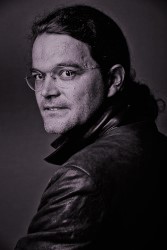Logic for Children
Workshop at UNILOG'2018 organized by Eduardo Ochs Fernando Lucatelli Nunes When we explain a theorem to children — in the strict sense of the term — we focus on concrete examples, and we avoid generalizations, abstract structures and infinite objects. When we present something to “children”, in a wider sense of the term that means “people without mathematical maturity”, or even “people without expertise in a certain area”, we usually do something similar: we start from a few motivating examples, and then we generalize. One of the aims of this workshop is to discuss techniques for particularization and generalization. Particularization is easy; substituing variables in a general statement is often enough to do the job. Generalization is much harder, and one way to visualize how it works is to regard particularization as a projection: a coil projects a circle-like shadow on the ground, and we can ask for ways to “lift” pieces of that circle to the coil continously. Projections lose dimensions and may collapse things that were originally different; liftings try to reconstruct the missing information in a sensible way. There may be several different liftings for a certain part of the circle, or none. Finding good generalizations is somehow like finding good liftings. The second of our aims is to discuss diagrams. For example, in Category Theory statements, definitions and proofs can be often expressed as diagrams, and if we start with a general diagram and particularize it we get a second diagram with the same shape as the first one, and that second diagram can be used as a version “for children” of the general statement and proof. Diagrams were for a long time considered second-class entities in CT literature ([2] discusses some of the reasons), and were omitted; readers who think very visually would feel that part of the work involved in understanding CT papers and books would be to reconstruct the “missing” diagrams from algebraic statements. Particular cases, even when they were the motivation for the general definition, are also treated as somewhat second-class — and this inspires a possible meaning for what can call “Category Theory for Children”: to start from the diagrams for particular cases, and then “lift” them to the general case. Note that this can be done outside Category Theory too; [1] is a good example. Our third aim is to discuss models. A standard example is that every topological space is a Heyting Algebra, and so a model for Intuitionistic Predicate Logic, and this lets us explain visually some features of IPL. Something similar can be done for some modal and paraconsistent logics; we believe that the figures for that should be considered more important, and be more well-known. References [1]: Jamnik, Mateja: Mathematical Reasoning with Diagrams: From Intuition to Automation. CSLI, 2001. [2]: Krömer, Ralf: Tool and Object: A History and Philosophy of Category Theory. Birkhäuser, 2007. Useful link: More about the WorkshopCall for papers Topics of interest to the workshop include, but are not limited to:
Contributed talks should not exceed a duration of 30 minutes including discussion. To submit a contribution, please send a one-page abstract by December 1st, 2017 to: eduardoochs@gmail.com
|
Keynote Speakers
Contributing Speakers
Anne Brel Cloutier,
Institute of Cognitive Sciences, Université du Québec, Montréal, Canada,
“Community of Philosophical Inquiry” |
||||

 SCHEDULE
SCHEDULE 
